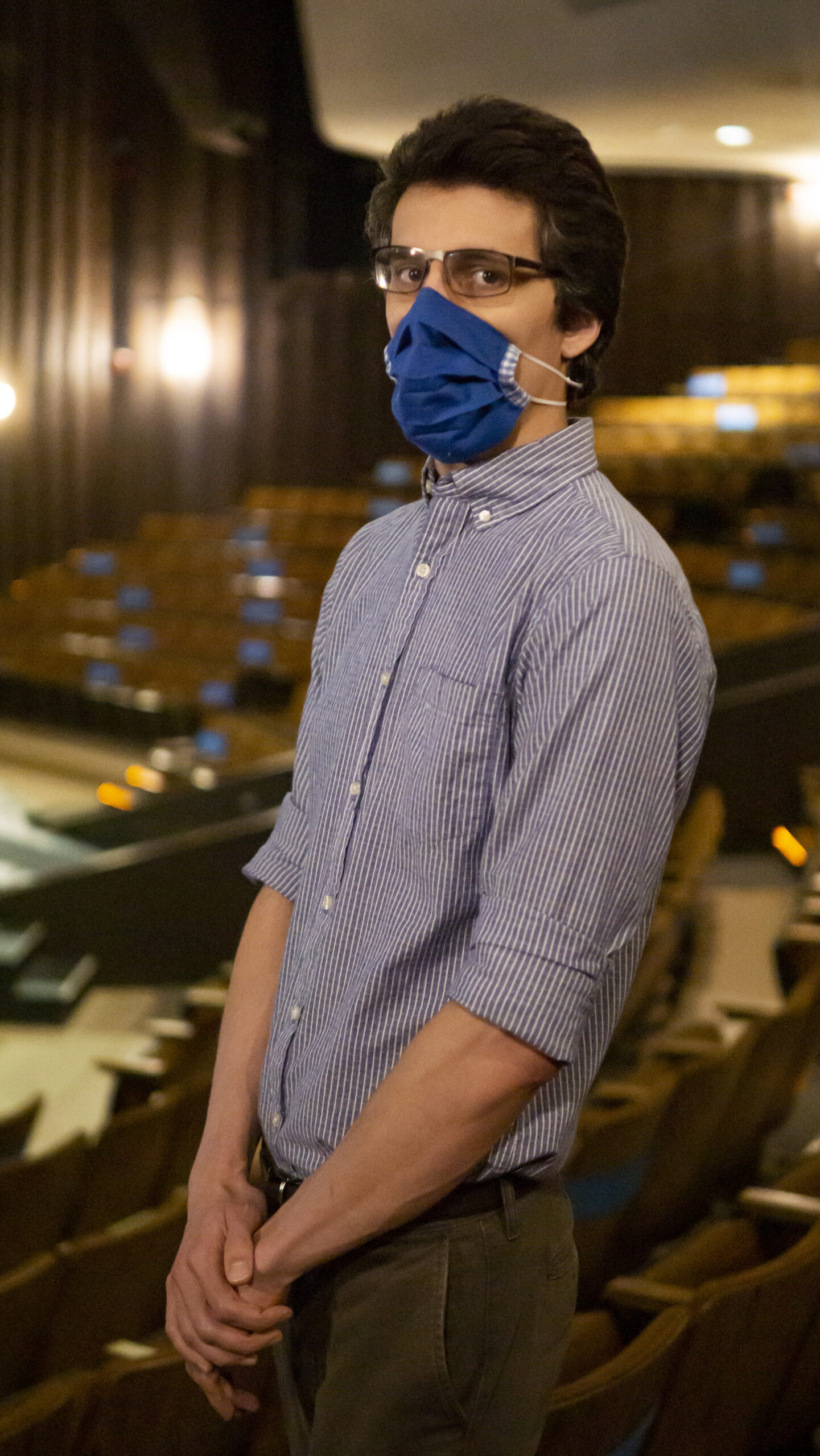URI hires new full-time faculty member for design
Theatre Professor James Horban teaches students about lighting on stage productions. Photo by James Singer.
As a teenage boy, he would sit in front of his computer, making his own light shows with the pre-visualization software and lighting consoles he had downloaded onto his computer; his own self-described “idea of a fun weekend.”
James Horban, assistant professor of lighting and scenic design, is the first full-time faculty member of design that the University of Rhode Island theatre department has had in years. He comes to URI following his time as associate professor for the Live Entertainment Technology (LET) program at Lone Star College-Montgomery in Conroe, Texas. He has many professional lighting and scenic design credits, including Long Wharf Theatre in New Haven, Connecticut and is a three-time recipient of the Kennedy Center Award for meritorious achievement in design.
Horban has a lot of experience in the field of design, but his favorite theatre project he’s ever taken on was a few years ago back at Lone Star College-Montgomery when he was in charge of the lighting and scenic design for their production of “The Rocky Horror Show.”
With access to a lot of lighting, video and pixel mapping technology, he was able to experiment with using as much tech as possible in a way that would support the production and not overwhelm it. He felt like it brought him back to his original roots of planning light shows, but this time he was doing it with purpose.
Much of what he was doing when he first started out he is now doing with his current students, as he adjusts to teaching during this time of social distancing.
Horban’s class, THE 261: Introduction to Theatre Design, has about 30 students, but with URI’s COVID-19 guidelines, they cannot all meet at once, forcing him to split them into two groups.
“I knew that a face-to-face component was very important just because when you work in theatre,” Horban said, “it’s a community of do-ers and of builders and it’s all very tactile so to suck that out would just be very, very difficult.”
Along with that face-to-face component, his students are learning through using the same kind of software he used as a teenager to teach himself how to design light shows. Horban then plans to spend the in-person class time making what they did on the software come to life.
As a teenager using the software, he was just interested in the way lighting looked when he was that age. He then found himself listening to music while teaching himself how to program consoles and imagining how to support the music visually, with light as a medium, inspired in-part by the “Fantasia” animated Disney films.
He went on to pursue a bachelor of fine arts degree in theatre design and production at the University of Cincinnati College-Conservatory of Music, seeing it as the only way to really get to program the light shows he’d done as a hobby outside of his computer software.
“As I started spending time within theatre, that’s when [my interests] kind of transitioned into telling a story through these mediums,” Horban said.
Having a full-time faculty member in design gives students the opportunity to take classes that weren’t offered before, such as the scenic painting class Horban teaches. One of those students is Erin Doyle, a junior theatre major with a concentration in design tech. Beyond the added classes, she believes it’s important to have Horban to be a voice and advocate for the design concentration.
“I feel like the tech side of things can get pushed to the side sometimes, and it’s important that we have someone to make sure it doesn’t happen,” Doyle said.
Horban’s advice to students like Doyle is to feel free to chase what makes you happy and to find the creators that inspire you and follow them. Design also doesn’t have to be limited to theatre, but having that background in theatre instills students with the skills they need to go out into other parts of the live entertainment industry, like concerts, according to Horban.
Part of the fun Horban finds in teaching is exposing students to these options and then seeing them grow in their designing style and interests, being that it’s such a subjective field.
“That’s what’s hard about design, it’s not that you go to school for four years and you know everything,” Horban said. “You’re constantly changing your style and learning and practicing and doing it and making new things. Finding those resources and people who inspire you early is really important for that.”





